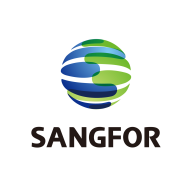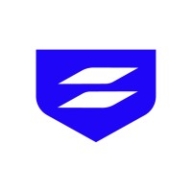


Sophos XG and Sangfor NGAF compete in the network security category, providing robust firewall solutions. Sophos XG seems to have the upper hand due to its synchronized security features and extensive protection capabilities.
Features: Sophos XG offers web and application filtering, wireless integration, and email protection with encryption, delivering synchronized security via active endpoint connections. It includes Sophos Sandstorm and Sophos RED for simplified deployment and enhanced security protocols. Sangfor NGAF is notable for efficient application control and intrusion detection, with dual functionality for firewall and WAN optimization, supporting unified management.
Room for Improvement: Sophos XG users face challenges with VPN and central management, and desire improved firewall policy presentations and support response times. Setup complexity and limited scalability are also concerns. Sangfor NGAF could improve interface design and augment real-time reporting while addressing DNS dependency and enhancing third-party provider integration.
Ease of Deployment and Customer Service: Sophos XG allows flexible deployment across hybrid, on-premises, and public cloud environments. However, technical support quality and responsiveness receive mixed reviews. Sangfor NGAF is easier to deploy but needs better support, especially for hybrid environments. Users praise its deployment options and intuitive setup process.
Pricing and ROI: Sophos XG is a mid-range option with flexible pricing tailored to different economies, including valuable perpetual licensing, though three-year licenses can be costly. Sangfor NGAF is cost-effective compared to Fortinet and Palo Alto, offering reasonable pricing models suitable for various business sizes, making it attractive from a budget perspective.
| Product | Market Share (%) |
|---|---|
| Fortinet FortiGate | 20.4% |
| Sophos XG | 9.6% |
| Sangfor NGAF | 1.2% |
| Other | 68.8% |



| Company Size | Count |
|---|---|
| Small Business | 350 |
| Midsize Enterprise | 130 |
| Large Enterprise | 187 |
| Company Size | Count |
|---|---|
| Small Business | 15 |
| Midsize Enterprise | 10 |
| Large Enterprise | 10 |
| Company Size | Count |
|---|---|
| Small Business | 140 |
| Midsize Enterprise | 50 |
| Large Enterprise | 37 |
Fortinet FortiGate excels in providing integrated VPN, firewalling, and Unified Threat Management (UTM) with centralized management and high availability. It supports remote access and comprehensive threat protection, making it a preferred choice for securing networks.
Fortinet FortiGate offers a robust security platform with features such as strong intrusion prevention, application control, and web filtering. Its integration with Active Directory and SD-WAN functionality provides scalable solutions for large networks. Users appreciate its ease of use through centralized management interfaces, ensuring robust security with flexible configurations. However, FortiGate could enhance its graphical interface and technical support responsiveness, address firmware bugs and costly licensing, improve logging, integrate better with third-party tools, and strengthen scalability and memory for log storage. Complexity in configuration and the need for intuitive features are noted challenges, and there's a demand for advanced security, zero-trust capabilities, and AI integration.
What are the key features of Fortinet FortiGate?Fortinet FortiGate is widely implemented across industries like education, finance, and government. Companies use it for firewall protection, VPN, and SD-WAN capabilities, ensuring secure perimeter and data center security. It facilitates remote access management and traffic routing optimization, offering reliable security and connectivity solutions.
Sangfor Next Generation Firewall (also known as NGAF) is a converged security solution providing protection against advanced threat, malware, viruses, ransomware and web-based attacks using integrated security features like firewall, IPS, anti-virus, anti-malware, APT, URL filtering, Cloud Sandbox, and WAF. As the world's first AI-enabled and fully integrated Next Generation Firewall & Web Application Firewall (WAF), NGAF offering the security visibility, real-time detection and response, simplified operation and maintenance and high-performance application layer security needed to operate an enterprise network in total security. Tested and proven to provide cutting-edge network security by ICSA Labs and endorsed by Gartner Inc., NGAF harnesses the power of Sangfor’s Neural-X threat intelligence and analytics platform and Engine Zero’s innovative malware detection to provide next-generation protection for today’s enterprise.
Sophos XG provides robust security capabilities, offering features like web filtering, VPN, and user-friendly management. Its intuitive setup and policy adjustments enhance security while synchronized endpoint protection ensures comprehensive defense.
Sophos XG is a network security solution with web and application filtering, VPN features, and a management interface that simplifies configuration. It offers email protection, threat prevention, and reporting capabilities, all contributing to a comprehensive defense strategy. Synchronized security with endpoints enhances protection, and advanced threat protection with efficient bandwidth management supports secure remote work environments. However, users suggest improvements in log interfaces for real-time actions and better email protection. Enhancements in link load balancing, RAM, VPN stability, and central management are needed. HTTPS filtering, certificate management, technical support, and scalability of the SD-WAN feature can see advances.
What are the key features of Sophos XG?In industries such as healthcare, education, and financial services, Sophos XG acts as a mainline defense for network security, VPN connectivity, and web filtering. It supports secure remote access, intrusion prevention, antivirus scanning, and secure web gateways integrated with endpoint systems, tailoring its extensive security capabilities to meet specific industry requirements.
We monitor all Firewalls reviews to prevent fraudulent reviews and keep review quality high. We do not post reviews by company employees or direct competitors. We validate each review for authenticity via cross-reference with LinkedIn, and personal follow-up with the reviewer when necessary.